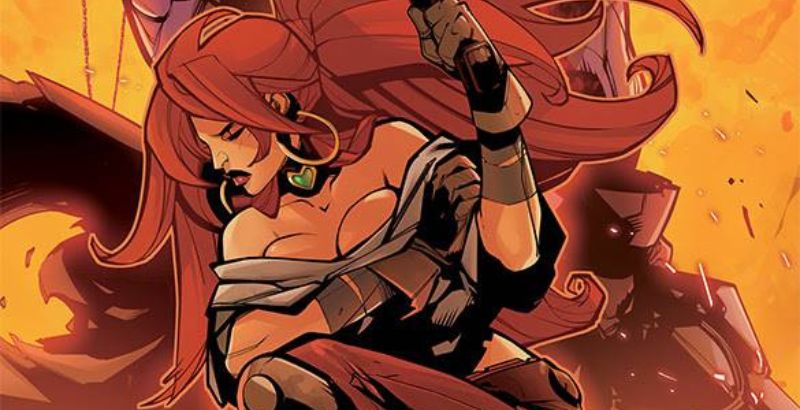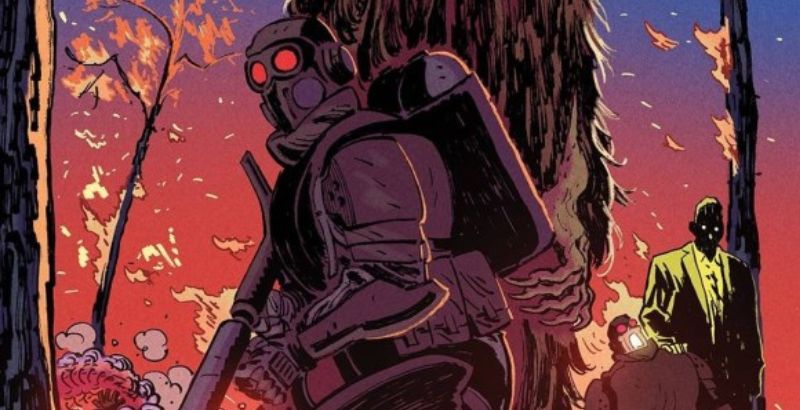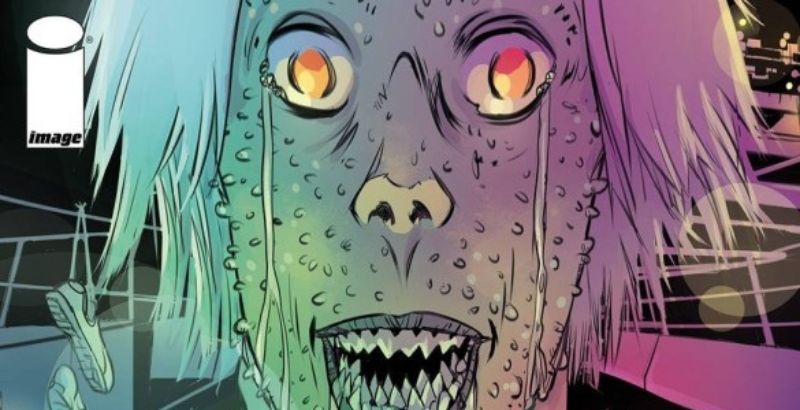
The Department of Truth #6 is published by Image Comics, written by James Tynion IV, with art by Elsa Charretier, colors by Matt Hollingsworth, and letters by Aditya Bidikar. Departing from Cole’s developing situation, this issue takes a couple of steps backward. First, we are gifted with a look at Oswald’s first days at the Department. After that, we are taken much further back. Back to the end of the first millennium and an interaction between a monk and an old widow.
From the moment that The Department of Truth’s big secret was revealed, I have wondered whether or not this is new information or if it was known throughout time. If it has been known, what does that mean for history? How have things been changed and rewritten over the centuries? With The Department of Truth #6, we see how the truth has been used to manipulate reality throughout time.
Our journey back in time takes us to the year 1000 A.D. in the Black Forest of Germany. We open on a Benedictine monk whose cart has broken down on his way to visit a curious older woman. After receiving directions from a mysterious woman in red, the friar is able to find his way to the older woman’s house.
The friar has come to speak to the woman because of the stories the children tell of her. They claim she is the child of the last Roman Emperor. But as Rome fell nearly five hundred years ago, there can be no truth to this tale. Right?
The following story that Tynion pens is a sharp discussion that both entertains and fascinates as some of the world’s history, and the manipulations it has undergone, are laid bare. Of all the ways Tynion could have opted to display the manipulative possibilities with The Department of Truth’s history, this is one I never would’ve guessed and yet makes such resounding sense.
Something that will stand out to long-time series fans when they open up The Department of Truth #6 is that series artist Martin Simmonds’s work doesn’t provide the visuals for this issue. While the unexpected art change is initially jarring, the art utilized by Charretier certainly works for the period the story takes place. With a flat style to it, the art harkens back to the sort of old illustrations my mind associates with hundreds of years ago. Back before humanity got a handle on that whole perspective thing.
The colorwork does a great job of working with the simplified line art here. Flat colors with little shading lean into the style the art is aiming for. Normally it would be too simple for my tastes, but here colorist Hollingsworth is smart to go with the less is more approach.
Lastly, we have the lettering. Bidakar’s font choice is the final touch that completes the story’s visual enhancement of its period. The thinner letters, and use of lowercase, create an older, more handwritten appearance while not sacrificing the clarity of the text for readers.
When brought together, The Department of Truth #6 delivers an enjoyable, if unexpected, detour. While I eagerly await the continuation of the primary narrative, this glimpse into the past helps emphasize the power that the truth has had over human history.
The Department of Truth #6 is available now wherever comics are sold.
The Department of Truth #6
TL;DR
When brought together, The Department of Truth #6 delivers an enjoyable, if unexpected, detour. While I eagerly await the continuation of the primary narrative, this glimpse into the past helps emphasize the power that the truth has had over human history.






